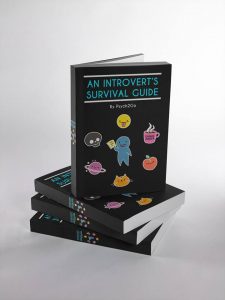10 Psychological Theories You Can Use to Persuade People

Persuasion is an art and skill worth mastering. But like all skills, it takes practice. Changing Minds, a website run by Dave Straker, lists various theories worth exploring that help strengthen the way you can influence people. Whether you want to be a better salesperson, debater, or speechwriter, it’s important to understand and meet the needs of your audience. How people deliver their information to us affects the way we process it and whether we are willing to be receptive to it. Psych2Go shares with you 10 psychological theories you can use to persuade people:

1. Amplification Hypothesis
The amplification hypothesis concentrates on the attitude an argument is delivered by. The more aggressive or certain an argument is presented, the more the attitude hardens. The same rings true for the opposite. When an argument is softened or uncertain, the attitude also softens. This is why the more emotional someone is when they present their argument, it’ll have little to no impact on someone who values a more cognitive approach. The reverse holds true, too. If someone uses a rational attitude, it won’t be effective to someone who is more attuned to the emotional aspects of the issue.

2. Conversion Theory
The conversion theory shows how the minority group can convince the majority to join their cause. Four major factors that the minority focus on are consistency, confidence, being unbiased, and resistance. They understand that although the majority of the population may be going along with a certain cause, some may be silently opposing it, because they are afraid to go against popular opinion. The minority group bravely shows their opposition towards the majority’s cause and expresses empathy and similar views with those who silently oppose as well to gain their trust so that they join them. Thus, as the minority group gains more support, they can grow to fight against the opposing side.

3. Information Manipulation Theory
This theory involves a person who deliberately breaks from one of the four components that make up the truth:
Quantity: Information given is full.
Quality: Information given is truthful and accurate.
Relation: Information is relevant to the conversation.
Manner: Information is delivered in a comprehensive way aligned with nonverbal language that supports it.
In other words, someone who uses this technique to persuade the public lies, uses excuses, or provides vague information in order to get their way. This is why people generally pay close attention to politicians, assessing how accurate and consistent their promises are with the situation at hand. When their speeches remain untruthful, good journalism often reveals it with quotes and compares them to the actual situation.

4. Priming
Priming occurs when a stimulus is provided by the persuader that may influence someone’s thoughts and actions, even when the stimulus is non-related. It exists in many forms and the purpose is to either introduce new thoughts or bring old thoughts from the subconscious up to the surface. Priming is essentially a play on words that helps with triggering. Often, the person who is being primed is not aware of it, which makes the technique effective. Changing Minds provides the following example: “A stage magician says ‘try’ and ‘cycle’ in separate sentences in priming a person to think later of the word ‘tricycle.’”

5. Reciprocity Norm
Reciprocity is commonly practiced in which one person helps someone else, so that the other individual returns the favor later down the road. When using this technique, you can give someone your time, money, or other desirable resources. The more the person appreciates what you give them, the better, but it’s important not to give too much. Then, ask for something in return. If you are trying to reject someone’s use of the reciprocity norm, it’s best to say no when they ask for something in return or by being polite and giving them something else.

6. Scarcity Principle
This method is often used in the world of retail. When something is offered at a limited amount of time, it puts pressure on the buyer to make faster decisions. If the object being sold is desirable, the individual is more likely to be persuaded to buy it soon, fearing that if they wait too long, then others will get to it first. When running businesses, scarcity is something you can use to make the products and services you offer more valuable to consumers.

7. Sleeper Effect
The sleeper effect is when messages with low persuasion increase over time. Usually, messages that seem the least persuasive come from resources that are the least credible. However, the message still has potential to persuade people once it separates from its resource. For example, if someone were to post health-related advice on FaceBook who doesn’t have a medical background, people may not find it convincing. But it would be different hearing the same advice from a professional who heard the same advice on the news.

8. Social Influence
Social influence is what causes someone to change their behavior, whether it’s intentional or unintentional. This is highly dependent on the relationship the person has with the influencer. Three areas of social influence are conformity, compliance, and obedience. Conformity occurs when the person is focused on being liked by others, so they will change their behavior in order to fit in. Compliance is when the individual does something they are asked to do based on factors like social reward or punishment. Still, they may choose to not to do the task. Obedience is different from compliance because the individual does something they are asked to do when they feel as though they don’t have a choice.

9. Yale Attitude Change Approach
This approach was discovered by Yale University in which factors, such as how attractive the speaker is, when they deliver their speech, and how they deliver their speech affects how persuasive they are. It emphasizes that the speaker should not be so quick to persuade and ease into using this approach slowly. If the speaker is too enthusiastic to use it, the audience will grow aware that it is being used and it won’t be effective. This is why politicians often master the art of persuasion, because their timing always has to be just right.

10. Ultimate Terms
Language is a powerful weapon. But more importantly, the choice of words we use when delivering arguments can have a profound influence on others. This technique delves into the different kinds of terms we can use to persuade. God terms, also known as power words, carry blessings and demand obedience, such as “progress” and “value.” But negative word, such as “dangerous” or “unhealthy” can also be used to scare people to take action, which can be just as effective. Depending on the context, choosing ultimate terms can enhance your argument.
What do you think?
Did you find these theories helpful? Psych2Go would love to hear your thoughts! Please be sure to leave a comment down below!
Want to say hello or send a personal message? You can reach the author at catherine@psych2go.net. ♥
If you enjoyed this article, then you may also like 7 Psychological Tricks that Can Help You Make a Good Impression or 7 Strange Signs You Will Be Successful.
Looking for more reading supplies? Please check out our e-book: An Introvert’s Survival Guide! Get your copy today!
Love our content and want to continue supporting us? Visit our Patreon!
References:
Lee, K. (2014, May 8). How to Use 10 Psychological Theories to Persuade People. Fast Company. Retrieved May 2, 2018.
Straker, D. (2002). How We Change What Others Think, Feel, Believe and Do. Retrieved May 2, 2018, from changingminds.org





Responses